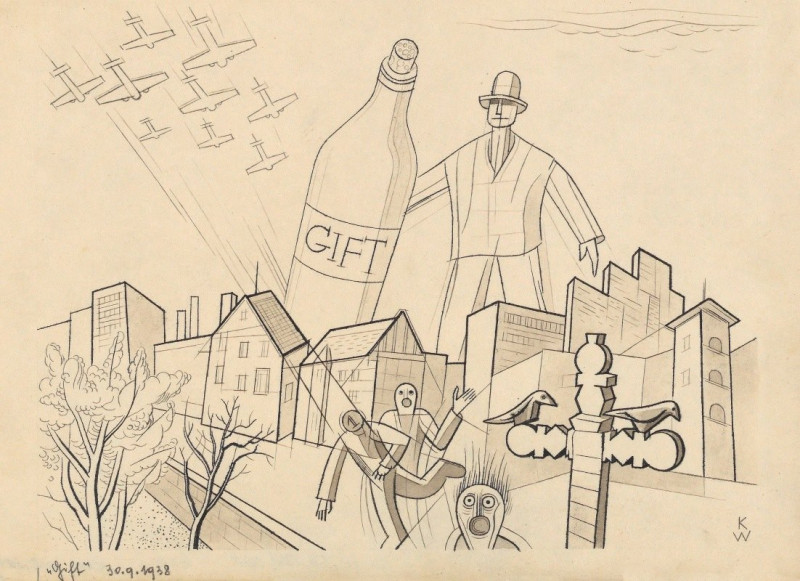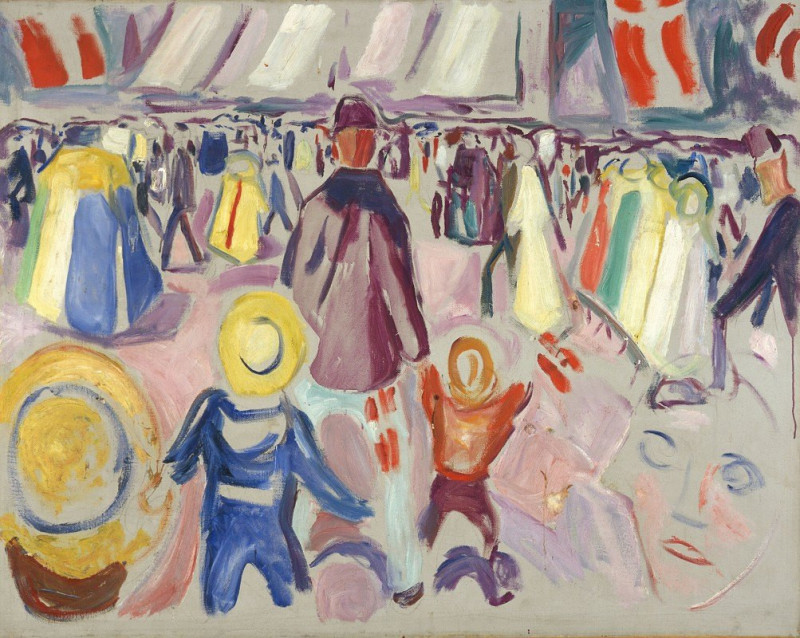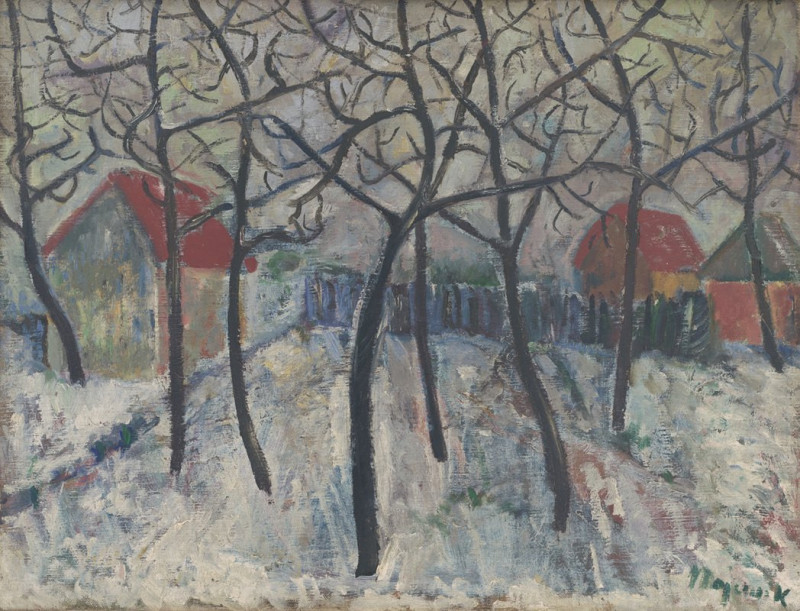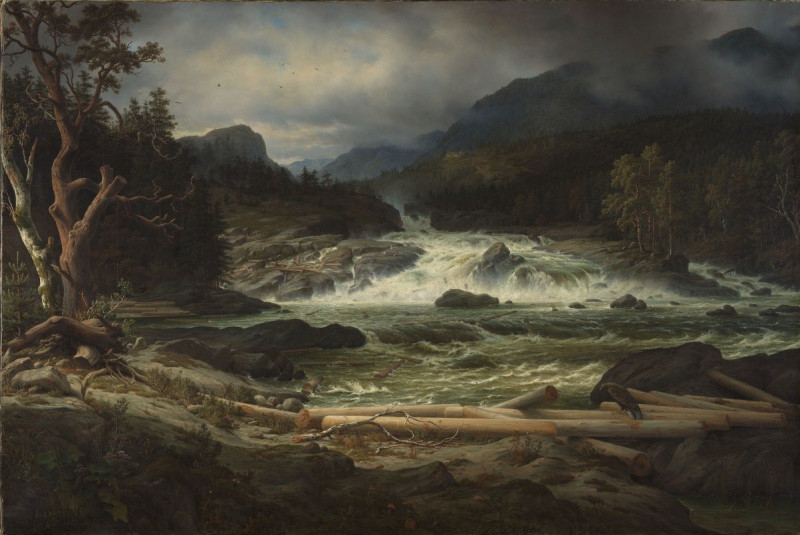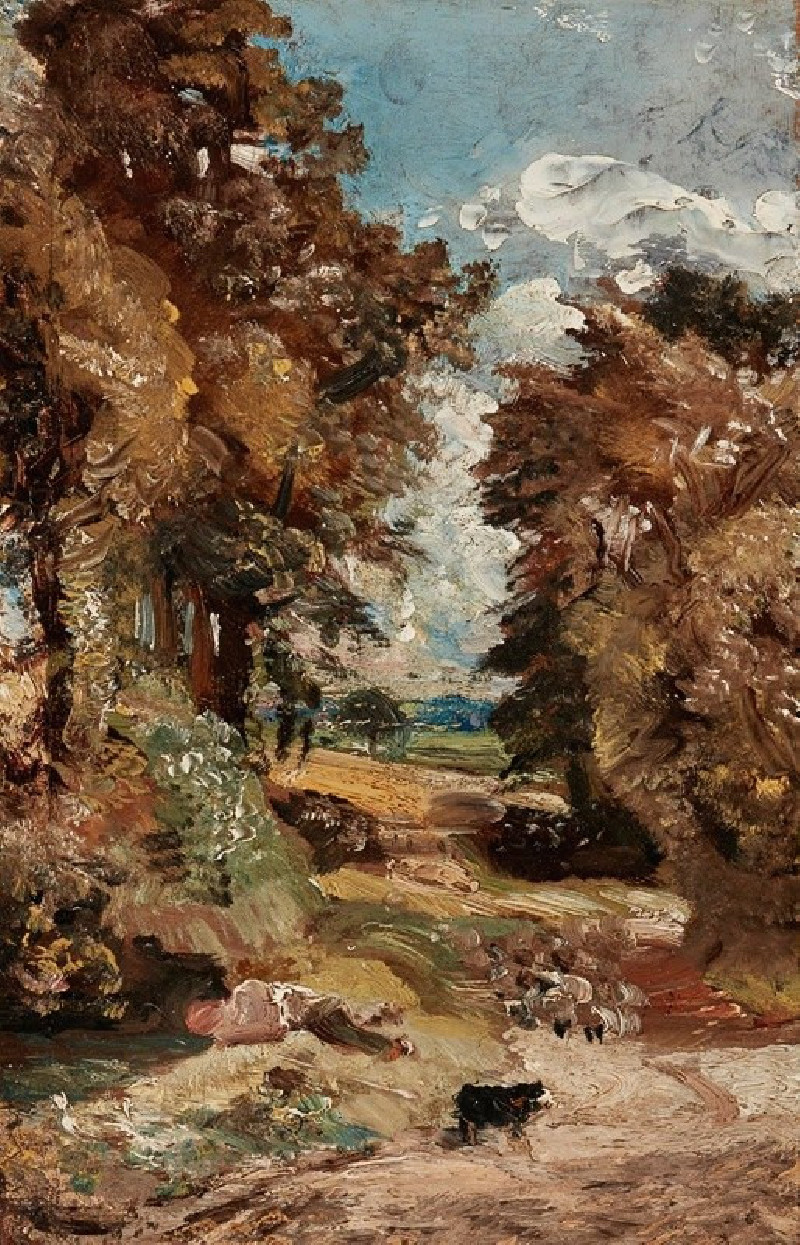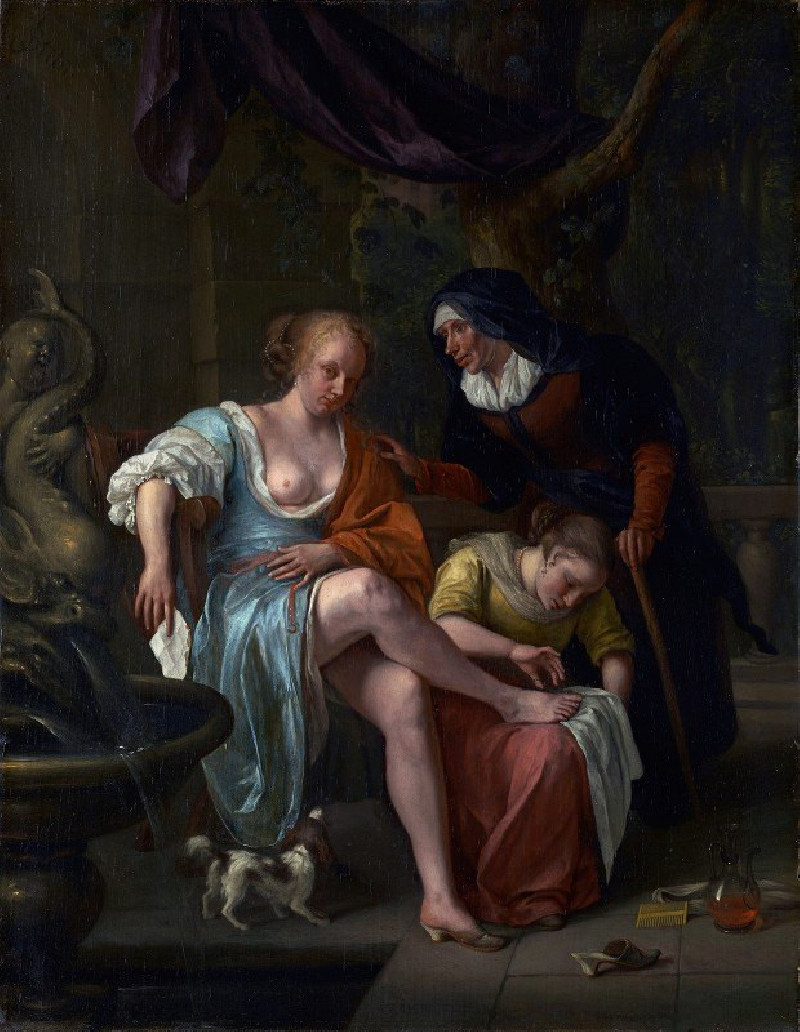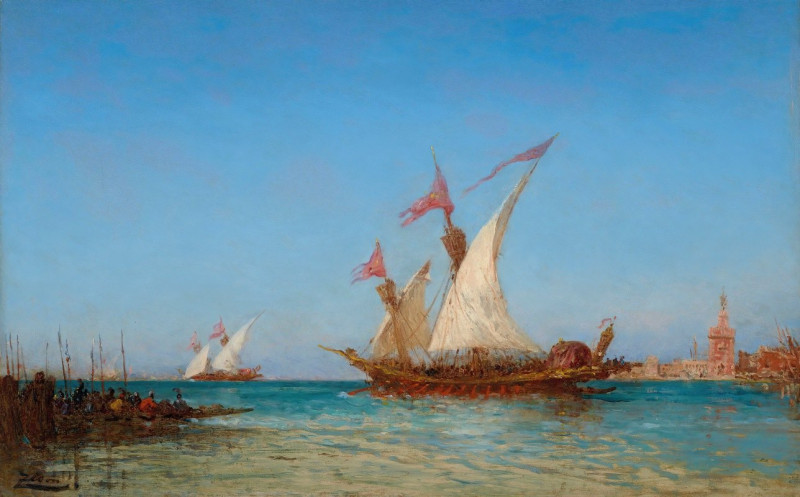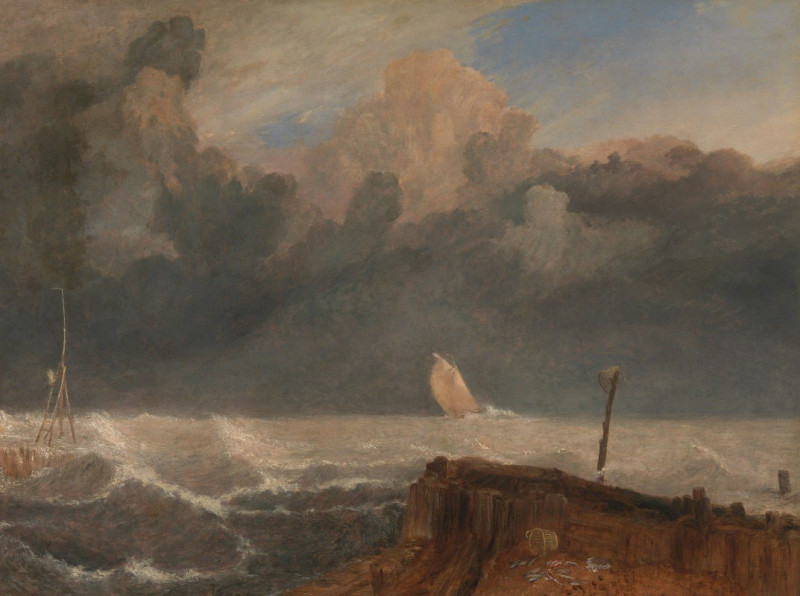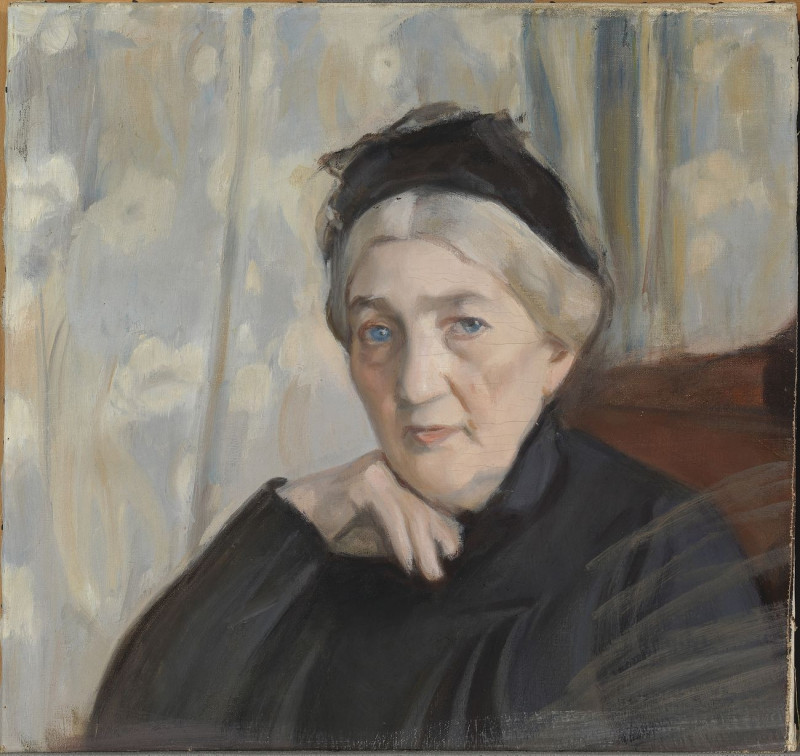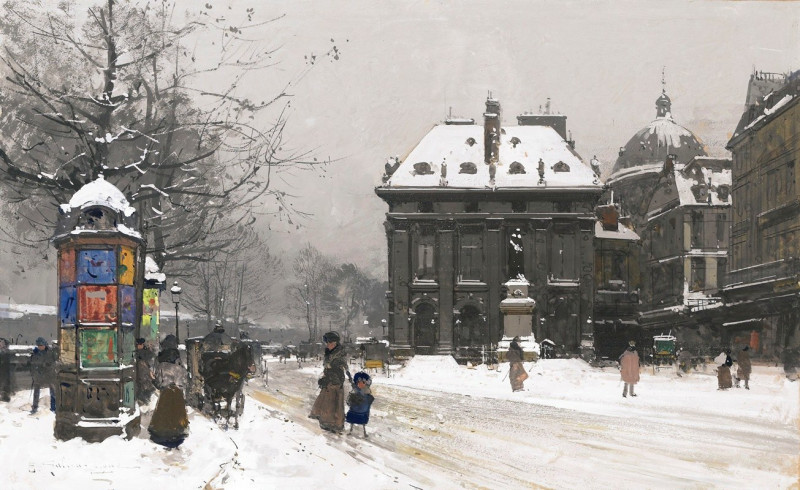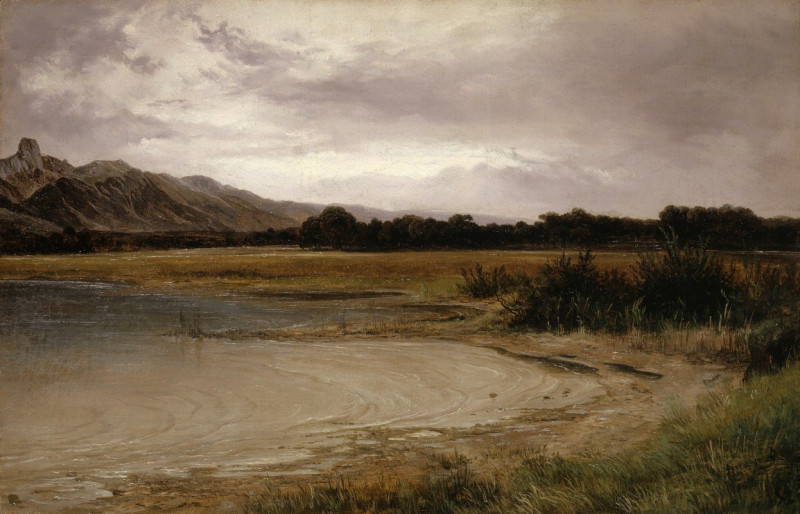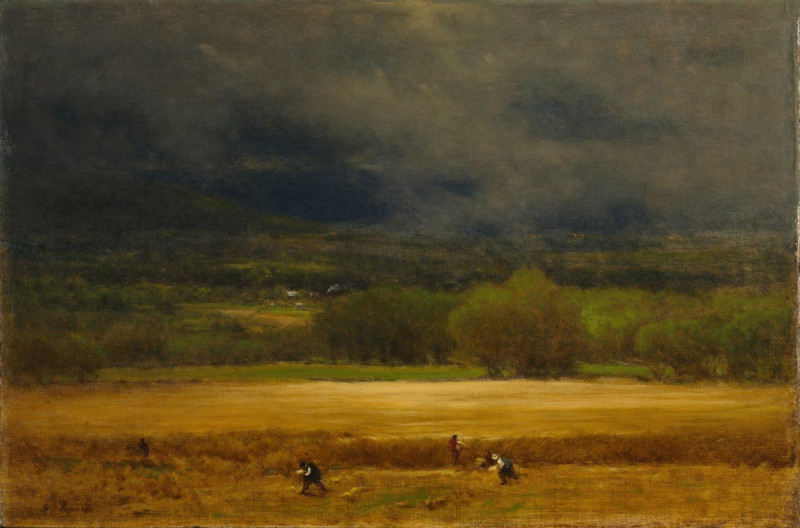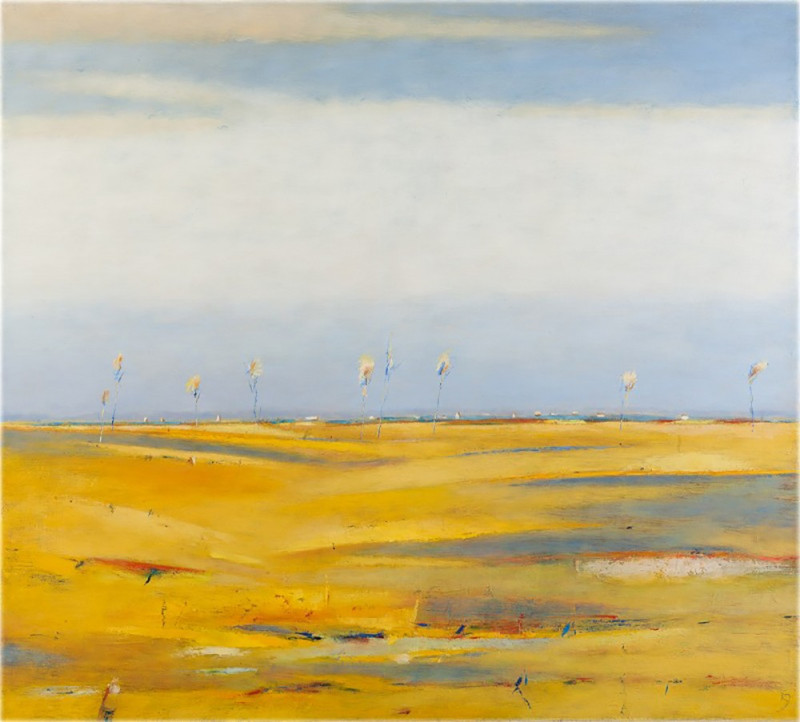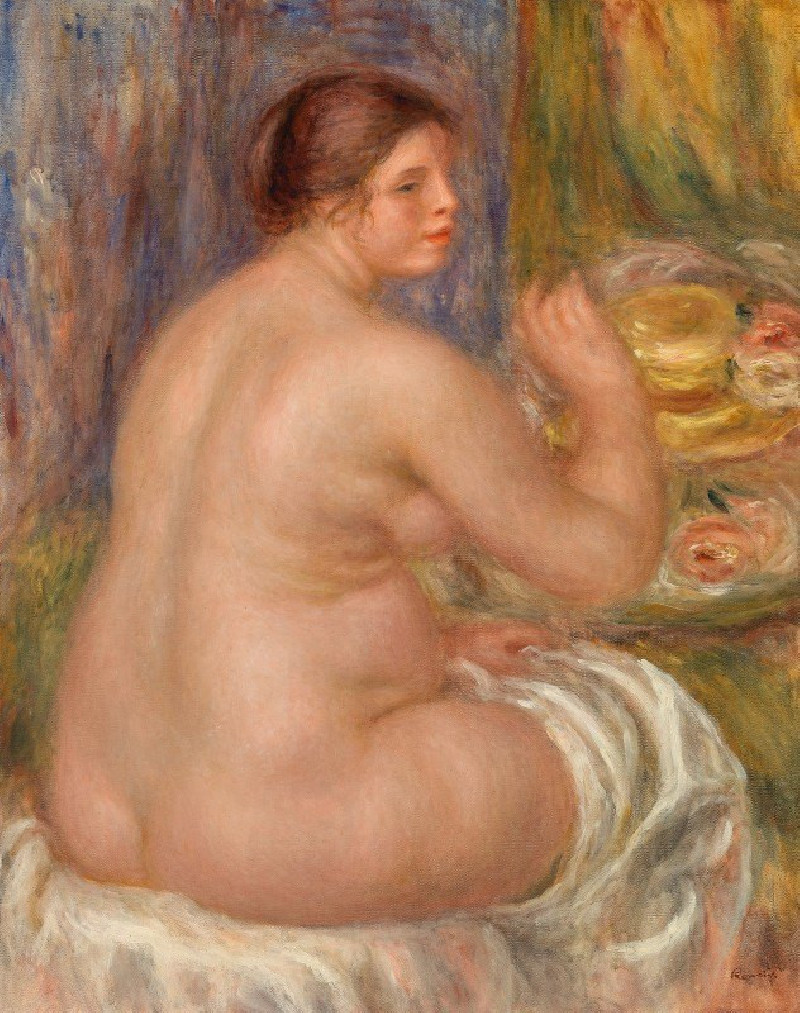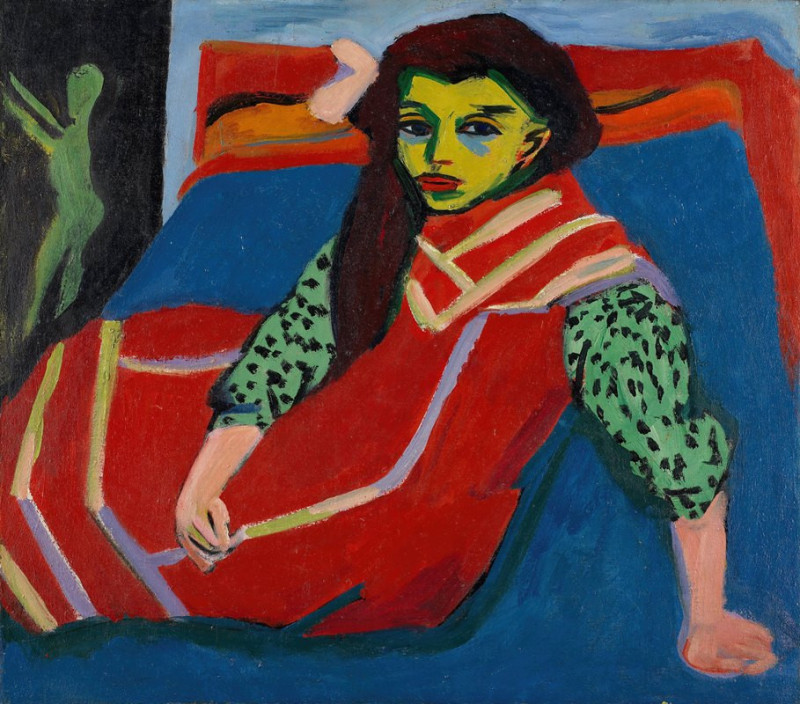Gift
Technique: Giclée quality print
Recommended by our customers
More about this artwork
Karl Wiener's evocative drawing titled "Gift" presents a rich tableau set against the backdrop of a war-torn cityscape. Dated September 30, 1942, the artwork is executed in a stark, linear style that heightens the sense of tension and disarray it conveys.Central to the composition is a large bottle, ominously labeled "GIFT," which in German means 'poison'. The bottle dominates the foreground, suggesting a dangerous offering or a deceptive trap. On the right side of the scene stands a featureless man, cloaked and hat-topped, resembling a statue or ghostly presence, hinting at anonymity or universality.Surrounding these elements are smaller, interconnected vignettes: a flight of warplanes bombards from above, their formation tight and threatening. Below them, human figures with gas masks and an expressive bird caught mid-flight evoke a sense of panic and urgency. The chaos of war is further symbolized by the fractured buildings and disjointed perspective.The juxtaposition of mundane urban life with the surreal, almost apocalyptic imagery creates a poignant commentary on the intrusion of war into everyday existence.

